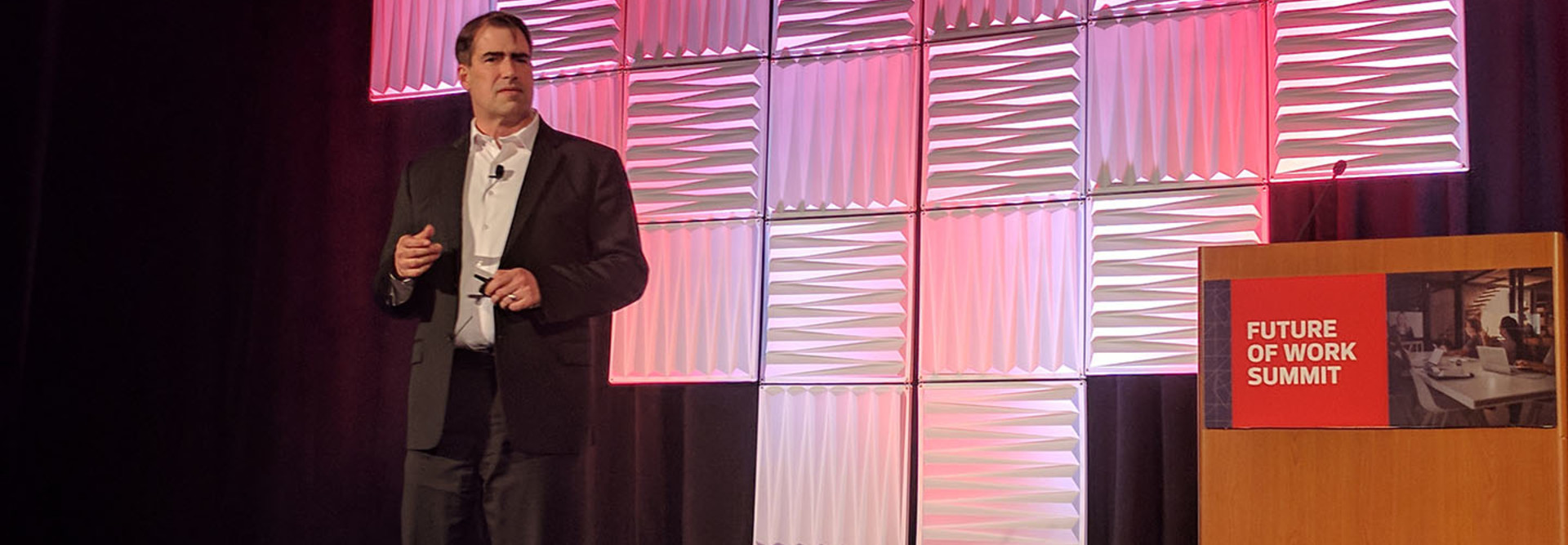What It Takes to Make Tomorrow’s Workforce Tech Better Than Today’s
Thanks to technology, today’s workforce has more freedom and flexibility than ever before concerning where and how work gets done. But not all technologies businesses have adopted to improve workflow and collaboration are having the full impact companies might have hoped for.
“The future of work might be really cool. But today’s experience? Maybe not so much,” said Tom DeCoster, vice president of integrated services sales at CDW, speaking Monday at the CDW Future of Work SummIT, taking place in Atlanta. DeCoster pointed to videoconferencing, which is often fraught with technical glitches and learning curves that can impede collaboration.
SEE MORE: Get started on transformation with digital workspace solutions.
The issue with such tools isn’t so much the impact they have on the workforce today but how they might create hurdles to adopting future tools.
“If people are having trouble setting up a videoconference, imagine how much trouble they’re going to have when we start introducing things like virtual reality and artificial intelligence,” said DeCoster.
3 Considerations That Can Help Improve IT Implementation
So, where do companies go from here? DeCoster suggests that information technology leaders looking to build an environment where employees can thrive — and maximize innovation, productivity and speed — should ask three questions when starting to roll out tools:
1. What Does the User Want?
Any workplace tools need to help employees simplify their workflow, support personal work styles and create a great employee experience. “It’s got to be convenient. It’s got to add knowledge. It has to help the employee drive efficiency and effectiveness,” said DeCoster.
DOWNLOAD: Check out what it takes to deliver a modern meeting experience.
2. What Does the User Need?
No two employees are alike, and IT teams should tailor technology to the user, digging into his or her day-to-day work style. The employee may very well have several roles within an organization, “which will trigger two different kinds of processes, which will trigger two different kinds of experiences that he or she needs,” says DeCoster.
3. What Does the User Actually Do All Day?
The last piece of the puzzle is to understand what an employee’s actual job looks like, and how technology can support business outcomes in the long run, whether those outcomes are financial, operational or innovation-based.
While these may be fundamental considerations for an IT leader, approaching the user experience with these three questions in mind can jump-start a workplace where technology is a critical success factor.
“This is all about making sure that we’re providing the right employee experience and becoming students of the employee experience, and are building our systems, building our processes around the employee,” said DeCoster. “Sound simple? It’s easier said than done. It takes a lot of work up front. It takes a lot of work on an ongoing basis.”
Check out our event page for more articles and videos from the CDW Future of Work SummIT.










